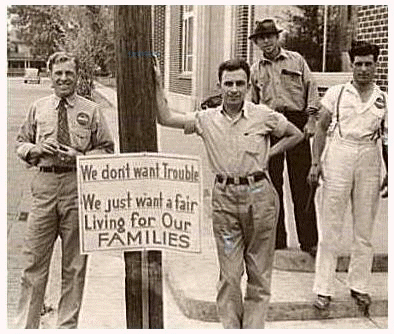 |
The Union Life Cycle Within The Byproduct Theory Of The Labor Movement by David R. Kamerschen, Charles D. DeLorme, Jr., John M. Mangel, and John E. Morgan, Jr.
|
 |
The Union Life Cycle Within The Byproduct Theory Of The Labor Movement by David R. Kamerschen, Charles D. DeLorme, Jr., John M. Mangel, and John E. Morgan, Jr.
|
|
|
David R. Kamerschen davidk@terry.uga.edu is a Distinguished Professor of Economics the holder of the Jasper Dorsey Chair at the University of Georgia. |
Charles D. DeLorme, Jr. delorme@terry.uga.edu is a Professor of Economics and Interim Chair of the Department of Economics at the University of Georgia. John H. Mangel is an Assistant Professor of Economics at the Georgia College and State University. John E. Morgan, Jr. is an Assistant Professor of Economics at the University of North Carolina, Wilmington.
INTRODUCTION: THE THREE STAGES OF THE UNION LIFE CYCLE
The union movement can be thought of as consisting of three stages. In two earlier papers, [Mangel, DeLorme, and Kamerschen, 1994 a, b], the byproduct theory of the labor movement was examined in its first stage where the labor leaders seeking their own rents establish the labor union. In the first stage, the labor leaders are dynamic and zealous.
Once the union gains respectability and acts as a bargaining agent for the workers, a second stage emerges where the labor leaders begin to lose their missionary zeal and begin to take on the trappings of management. The second-stage union leaders are more skillful politically and more level-headed administrators. The path to leadership now becomes a steady climb through the various levels of the hierarchy. This second stage of the labor movement can be documented by disciplined and businesslike union growth in the United States. In stage two, when the labor movement is at its zenith, there is centralization of control, expanded political activity and community integration, greater employer acceptance and cooperation, increased living standards for union workers, and more moderation and middle-of-the-road attitudes. Union membership in the United States reached its wartime (peacetime) peak around 1945 (1955), when it was 33.5% (33.2%) of the labor force [World Almanac, 2000, p. 154].
Eventually, the labor leaders begin to lose touch with the rank and file but continue to seek their own self-interest. Of course, it is harder to gauge the success of unions more than the success of business firms, as there is no single test such as maximization of profits. A principal test is whether union leaders can keep getting elected to office. The leaders are safeguarded by various institutional arrangements (such as government certification as the sole bargaining agent for employees), become more interested in settling problems and maintaining peaceful relationships, and are more concerned with the ease and convenience of administrators with employees. All of this has the attendant sacrifices in potential economic gains to the workers. The leaders seek the minimum gains required to keep in office while securing the maximum gains for themselves. It is well recognized that there is little democracy in labor unions, and labor leaders continue to be reelected to office in either the union or as spokespersons for organized labor. Moreover, in some cases the unions become ripe for corrupting influences such as racketeering. The unions in time become in the words of Lester [1958], just "sleepy monopolists."
In the third stage the union labor movement begins to decline. This can be documented by the loss in union members in the United States. However, our byproduct theory also explains how the union movement in the United States or in other countries can once again be invigorated by rent-seeking people wanting to be (new) union leaders. Once the rank and file begin to experience a decline in their wages and working conditions, and the old leaders are not providing what the workers want in their collective bargaining contracts, workers begin to seek new union leaders who can who will give the workers what they want.
Once the third stage ends, the first stage starts once more as the new rent-seeking leaders begin to push for higher wages and better working conditions in the collective bargaining contracts. The labor movement will begin to experience growth again, as union membership starts to increase. However, it may never be at the same peaks as measured by union membership, e.g., as it was in the United States in 1955. Our tripartite theory is illustrated by application to the United States in the next section.
APPLICATION OF THE THREE STAGES TO THE UNITED STATES
The United States is currently ending the third stage and possibly starting the beginning of a new first stage of the union movement. The original first stage began about 1880 and ended in about 1955, when the second stage began as peacetime unionization peaked at 33.2%. The third stage started about 1975, when the percentage of unionization was 25.5%.
In stage one, Samuel Gompers was President of the American Federation of Labor (hereinafter AFL) from its founding in 1886 to 1924 (except for one year, 1895). As was true with the vast majority of labor movement leaders that preceded and followed him, Gompers came from humble beginnings. While such circumstances are often viewed by historians as resulting in a champion of the poor and downtrodden, rent-seeking theory emphasizes this produces a generation of people determined to enhance their wealth. At the age of six, Gompers entered the Jewish Free School in London and remained there until the age of 10, whereupon he became a shoemakerís apprentice. This employment lasted for approximately 10 weeks before he quit, complaining about the high noise level in the shop. At this point, Gompers was apprenticed to a cigar maker, the only formal trade he ever learned. By 1864, Gompers had become a member of the local cigar makers' International Union (Gompers was 14 years of age) holding union card number 1 and by the age of 26 had attained the office of president. The formation of national unions into a national federation dates from the late 1880's with Gompers founding of the AFL in 1886. Almost immediately, the AFL launched the first successful strikes for the eight-hour day.
The central points of the AFL were group consciousness and organization by trades with strong national unions supported by large treasuries. The Cigar Makers Union had, in 1879, under Gompersí leadership, adopted high dues and given national officers complete control over local unions. The Cigar Makers' organization was copied by most other national unions over the next ten years, and the success of the union helped Gompers be elected to the presidency of the AFL in 1886.
Another principle of the AFL was that laborís aims are best furthered through pursuit of economic gains via collective bargaining. Gompers personally believed in working within the existing system. When asked what the aims of the federation were, Gompers replied succinctly: "More, more, more- now!"
A clear example of Gompersí rent-seeking behavior is found in his chapter entitled "Presidents I have Known." For example (Gompers, p. 547) states:
|
|
The completion of the AFL office building in Washington in 1916 marked a period of achievement in the history of the Labor movement that represented constructive progress, dependability, and sustained activity. The completion of labor's new home I planned to celebrate in a fitting way, so I invited the President of the United States and his Secretary of Labor, who was one of our own trade unionists, to participate in the dedication ceremonies to take place on July 4.
|
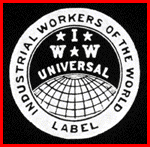 In 1902, the AFL was faced with the threat of "dual unionism." The Western Federation, critical of the Federation's craft philosophy, formed a rival federation, the American Labor Union. Three years later these industrial unionists joined hands with the radical socialists to form the Industrial Workers of the World. The IWW ("Wobblies") stressed industrial unionism based on unskilled workers and the idea of "one big union." Politically, the IWW advocated revolutionary socialism and its slogan was, "Abolish the wage system." It sought to implement this program by avoiding political action, relying instead on the general strike and sabotage as its chief "rent-seeking" weapons. "Big Bill" Haywood was secretary and co-founder of the Western Federation of Miners in 1893 and one of the most militant leaders of the IWW, whose peak of power came in 1912 when it organized strikes at Lawrence, Massachusetts, Paterson, New Jersey, and Little Falls, New York. After those struggles, the IWW power waned as did Bill Haywood's
[Dubofsky, 1987].
In 1902, the AFL was faced with the threat of "dual unionism." The Western Federation, critical of the Federation's craft philosophy, formed a rival federation, the American Labor Union. Three years later these industrial unionists joined hands with the radical socialists to form the Industrial Workers of the World. The IWW ("Wobblies") stressed industrial unionism based on unskilled workers and the idea of "one big union." Politically, the IWW advocated revolutionary socialism and its slogan was, "Abolish the wage system." It sought to implement this program by avoiding political action, relying instead on the general strike and sabotage as its chief "rent-seeking" weapons. "Big Bill" Haywood was secretary and co-founder of the Western Federation of Miners in 1893 and one of the most militant leaders of the IWW, whose peak of power came in 1912 when it organized strikes at Lawrence, Massachusetts, Paterson, New Jersey, and Little Falls, New York. After those struggles, the IWW power waned as did Bill Haywood's
[Dubofsky, 1987].
 Another example of able rent-seekers in stage one and part of stage two was John L. Lewis who was president of the United Mine Workers (hereinafter UMW) from 1920 to 1960
[Dubofsky and Vantine, 1986]. His life provides evidence for our byproduct theory of the labor movement. At the 1935 AFL convention he championed the cause of the industrial unions. That same year, he helped to organize the Congress for Industrial Organizations. Lewis came from a poor family and wanted to be rich. He ventured into a business partnership, got involved in town politics, and seemed to be bourgeois. The business failed, so he then joined the trade union that brought him unalloyed success. He used the influence of the more prominent figures in the union to gain preferment. Lewis and his brother enriched themselves at the expense of the union treasury. Lewis did not run for office and face elections, but instead used the influence, votes, and power he controlled in the large union local to inveigh patronage appointments from UMW superiors.
Another example of able rent-seekers in stage one and part of stage two was John L. Lewis who was president of the United Mine Workers (hereinafter UMW) from 1920 to 1960
[Dubofsky and Vantine, 1986]. His life provides evidence for our byproduct theory of the labor movement. At the 1935 AFL convention he championed the cause of the industrial unions. That same year, he helped to organize the Congress for Industrial Organizations. Lewis came from a poor family and wanted to be rich. He ventured into a business partnership, got involved in town politics, and seemed to be bourgeois. The business failed, so he then joined the trade union that brought him unalloyed success. He used the influence of the more prominent figures in the union to gain preferment. Lewis and his brother enriched themselves at the expense of the union treasury. Lewis did not run for office and face elections, but instead used the influence, votes, and power he controlled in the large union local to inveigh patronage appointments from UMW superiors.
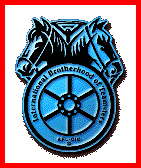 Of even greater importance is the type of second stage leaders that were found at the national level in the Teamsters Union. In 1952, Dave Beck was installed as the Teamsters' Union President (1952-1957). To Beck and the other Teamster leaders, the rudiments of a theory of the union's place in society can be discerned in the conception of unionism as a business. To quote Dave Beck in 1953: "I run this place just like the Standard Oil Company or the Northern Pacific Railway. We sell labor. We use business-like methods and business people have confidence in us"
[Bell, p. 153]. It is easy to see the outward appearance of rent-seeking behavior taking form.
Of even greater importance is the type of second stage leaders that were found at the national level in the Teamsters Union. In 1952, Dave Beck was installed as the Teamsters' Union President (1952-1957). To Beck and the other Teamster leaders, the rudiments of a theory of the union's place in society can be discerned in the conception of unionism as a business. To quote Dave Beck in 1953: "I run this place just like the Standard Oil Company or the Northern Pacific Railway. We sell labor. We use business-like methods and business people have confidence in us"
[Bell, p. 153]. It is easy to see the outward appearance of rent-seeking behavior taking form.
As president of the Teamsters in 1952, Beck [McCallum, 1978] forgot that the power still lay with the locals. He was too busy enjoying suites at the Waldorf-Astoria and other inns. However, James Hoffa did not forget, and Beck was being elbowed aside. In 1954, the U.S. Internal Revenue Service launched a quiet but extensive investigation of Beckís finances, which led eventually to his conviction in the spring of 1959. James Hoffa was elected as International President at the Miami Convention in October 1957. [See Sheridan, 1972.] The travesty that Hoffa makes of democratic procedure within the Teamsters Union is perfectly exemplified by his own election. The convention was rigged from start to finish.
Robert Kennedy [1960, p.43] stated, "From an examination of the Teamsters' own records, our investigators were able to prove that under the terms of the union's constitution, more than half the delegates-56.2 per cent-had been selected illegally; about the legality of an additional 39 percent there is serious doubt. In short, we could establish that only 4.8 percent of the delegates who elected Jimmy Hoffa had any clearly legal right to be at the convention and to vote." In 1957 Hoffa promised to clean up the Teamsters if he became president. In 1958, he said he had not had time to do a complete job. Yet, when this situation was brought to public light by Senator McClellan of the U.S. Congressional Committee, Mr. Hoffa permitted the corrupt union officials to leave the Teamsters and set up independent unions in the New York area. A number of other instances of sweetheart contracts, directly participated in by Hoffa or his associates, have been placed in the committee record, including the contracts signed with the Midwest Burlap & Bag Company in Des Moines, Iowa. These examples serve to destroy Hoffa's self-painted picture as a steadfast champion of working people. [See Findings, 11, p. 984.]
A great many of the Teamster officers and members were honest. However, under the rule of Hoffa and some of his predecessors, this Union was not run as a bona fide agency solely for his members. [See Lecht, 1959.] The evidence that has been presented in the section as well as in the McClellan Hearing provides ample evidence that the Teamsters Union is truly a example of rent seeking in the second stage. [See Leitner, 1957.]
The third stage in the U.S. union cycle began about 1975. To help in our documentation of this stage, Asher & DeFina [1995] have shown that one significant source of the considerable rise in earnings inequality in the U.S. in the past 20 years is the large decrease in the unionized segment of the labor force. The deunionization explains about 10% to 20% of the increase in earnings inequality of the past two decades.
TABLE 1
U.S. UNION MEMBERSHIP, 1930-1998
| YEAR |
PERCENTAGE UNIONIZATION = (UNION MEMBERS)/(LABOR FORCE) |
|
1930 |
11.6% |
|
1935 |
13.2 |
|
1940 |
26.9 |
|
1945 |
35.5 |
|
1950 |
31.5 |
|
1955 |
33.2 |
|
1960 |
31.4 |
|
1965 |
28.4 |
|
1970 |
27.3 |
|
1975 |
25.5 |
|
1980 |
21.9 |
|
1985 |
18.0 |
|
1990 |
16.1 |
|
1995 |
14.9 |
|
1998 |
13.9 |
SOURCE: World Almanac, 2000, p. 154.
As Table 1 documents, the deunionization has been dramatic. Asher & DeFina {1995, p. 709] provide several reasons for the decline in unionization, including major structural changes, greater managerial opposition, massive business relocations, and alternative provision of services by governments and employers.
But Asher & DeFina neglect what in our opinion is the most important reason, viz., the third stage of the union life cycle. The recent enhanced income inequality in the United States has strengthened the base for aspiring rent-seeking union leaders. The Gini Coefficient and income quintile ratio shows that inequality is at its highest level in 25 years. Some believe that the rising income inequality of the 1980s is simply a continuation of a trend that started in the 1950s [McKenzie and Klein, 1992].
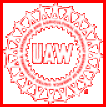 We feel this enhanced income inequality has been brought on by more global competition with the United States. A classic example is the breakdown in labor relations between organized labor (United Auto Workers, hereinafter UAW) and Caterpillar, Inc., a heavy equipment manufacturer based in Peoria, Illinois. In the early 1990s, Caterpillarís workers were cooperative and highly skilled, but the company argued that they were faced with global competition and thus needed to change their work rules. They wanted to introduce a managed health care plan, more flexible hours of work, and the ability to hire new workers at lower wages. Labor relations collapsed in June 1994 when the UAW workers walked out of the plant. However, after 18 months on strike, members of the UAW slowly returned to work with no forgiveness for those fired during the walkout. Caterpillar won the strike by shipping work overseas, hiring skilled workers through temporary-help agencies, installing new automated equipment and training newly hired workers. The defeat of this union was so thorough, some historians may view Caterpillar as the Waterloo of the American labor movement
[Geewax, 1995].
We feel this enhanced income inequality has been brought on by more global competition with the United States. A classic example is the breakdown in labor relations between organized labor (United Auto Workers, hereinafter UAW) and Caterpillar, Inc., a heavy equipment manufacturer based in Peoria, Illinois. In the early 1990s, Caterpillarís workers were cooperative and highly skilled, but the company argued that they were faced with global competition and thus needed to change their work rules. They wanted to introduce a managed health care plan, more flexible hours of work, and the ability to hire new workers at lower wages. Labor relations collapsed in June 1994 when the UAW workers walked out of the plant. However, after 18 months on strike, members of the UAW slowly returned to work with no forgiveness for those fired during the walkout. Caterpillar won the strike by shipping work overseas, hiring skilled workers through temporary-help agencies, installing new automated equipment and training newly hired workers. The defeat of this union was so thorough, some historians may view Caterpillar as the Waterloo of the American labor movement
[Geewax, 1995].
In the third stage, the rank-and-file vote out of office the old leaders and replace them with the new leaders, starting the first stage all over again. Examples of this type of action in the United States include the recent election in 1995 of John J. Sweeney as President of the AFL-CIO. Sweeney pointed out at the October 26, 1995, AFL-CIO's Twenty-First Constitutional Convention that the labor movement was getting ready to make major changes to promote organizing and collective bargaining.At the Constitutional Convention, Sweeney was joined by the new Secretary-Treasurer Richard L. Trumka, the Mine Workers president who, at 46, was the youngest member of the AFL-CIOís Executive Council. Trumka promised "more energy, more excitement and more passion than you've have seen in a long time." [See Byrne, 1995.]
Also, there have been changes in other union leadership such as Ron Carey, who ran on a radical reform platform and was elected as international president of the Teamsters Union in 1992 [The Teamster, 1995]. Another blow to the Teamster Unionís establishment occurred in November 1991 when the 72-year-old Boston, Massachusetts, local Teamster president, William McCarthy, was ousted by George Cashman, a business agent for the local. While McCarthy had run the local for 35 years, he was criticized by other union leaders for erratic conduct and lack of vision. In 1988, he had also been elected by the Teamster Unionís executive board as international president, replacing Jackie Presser, who died in office. McCarthy had decided not to run for reelection to the international but still wanted to keep his local presiding office. But he still lost to a dynamic new leader [Baker, p. A17]. However, it is important to recognize that in this third stage, unlike the beginning of the first stage of the byproduct theory of the union movement, penalties for workers are not the same as before, such as injuries suffered in unionizing the plant or private penalties imposed on workers for participating in union activity if unionization fails. A passage of the National Labor Relations Act (Wagner Act) in 1935 requires that both management and labor "bargain as a result in good faith," and has tended to minimize these losses to workers.
SUMMARY AND CONCLUSIONS
In this paper, we have proposed a union life cycle within our byproduct theory of the labor movement. The behavior of rent-seeking labor leaders is examined within each of three stages. After a vigorous and dynamic first stage of missionary zeal, a second stage of internal stability, centralization, and machine control leads to a process of external integration with greater accommodation, orderly and peaceful arrangements, breadth and moderation. This greater centralization and professionalism, more business-like conduct and stress on administration and less diversification and use of the strike to achieve objectives leads to the disenchantment of the third stage. At the end of the third stage, new rent-seeking labor leaders who are a positive force, appear on the scene, invigorating the union movement to a possible return to the first stage. The recent presidential elections in the AFL-CIO and the Teamsters suggests that the U.S. may be at the end of the third stage and could possibly be transitioning into the first stage once again. But campaign promises of these two recently elected presidents does not prove that the U.S. union movement is doomed forever. Troy [1990] emphasizes that structure changes from physical goods to services and from one type of manufacturing (e.g., steel) to another (e.g., semiconductors) is causing white-collar professionals to replace blue-collar workers. Troy also shows that private sector unionism is declining in Europe and Canada, although they still lag the U.S. by a decade in the structural changes. Moreover, if wage inequality is a driver in declining union membership, as Asher and Fina contend, the emerging global economy is likely to exacerbate the wage inequality and hence, drive union membership further into decline. But is still too early to know for sure if there will ever be another "stage one," but the evidence does seem against it.
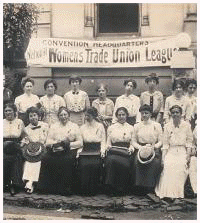
REFERENCES
Asher, M.A. and DeFina, R.H.(1995), "Has Deunionization Led to Higher Earnings Inequality?" The Business Review, Federal Reserve Bank of Philadelphia, pp. 3-12.
Baker, B. (1991), "Teamster Reformers Oust Union Head from Local Post," Los Angeles Times, November 26, p. A17.
Bell, D. (1953), "Laborís New Men of Power," Fortune, June, p. 153.
Byrne, M. (1995), "Sweeney Heralds ĎA Moment of Hope,í" AFL-CIO News, 40, pp. 1.
DeLorme, C.D., Jr., Kamerschen, D.R., and Mangel, J.H. (1994a), "Alternative Theories of the Labor Movement," Indian Journal of Industrial Relations, 29, pp. 271-290.
DeLorme, C.D., Jr., Kamerschen, D.R., and Mangel, J.H. (1994b), "Rent Seeking and the Byproduct Theory of Labor Movements," Rivista Internazionale Di Scienze Economiche E Commerciali (International Review of Economics and Business), 41, pp. 399-422.
Dubofsky, M. (1987), "Big" Bill Haywood, Manchester University Press, Manchester.
Dubofsky, M. and Vantine, W. (1986), John L. Lewis: A Biography, University of Illinois Press, Urbana and Chicago.
"Findings from the Second Report of the McClellan Committee," (1959), Monthly Labor Review, Washington, D.C.: United States Department of Labor, Bureau of Labor Statistics, 82, pp. 981-984.
Geewax, M.(1995), "Caterpillar Defeat Will Prove a Sea Change for U.S. Labor," The Atlanta Journal/The Atlanta Constitution, December 10, p. F7.
Gompers, S. (1967), Seventy Years of Life and Labor, Vol. I and II, Augustus M. Kelly, New York.
Kennedy, R.F. (1960), The Enemy Within, Popular Library Edition, New York.
Lecht, L.A. (1959), "The Teamsters and Predatory Unionism," The American Journal of Economics and Sociology 14, pp. 213-221.
Leitner, R.D. (1957), The Teamsters Union, Bookman Associates, New York.
Lester, R.A. (1958), As Unions Mature: An Analysis of the Evolution of American Unionism, Princeton University Press, Princeton, New Jersey.
McCallum, J.D. (1978), Dave Beck, The Writing Works, Mercer Island, Washington.
McKenzie, R.B. and C. Klein (1992), "The 1980s: A Decade of Debt?" Policy Study Number 114, Center for the Study of American Business, Washington University, St. Louis.
Sheridan, W. (1972), The Rise and Fall of Jimmy Hoffa, Saturday Review Press, New York.
Troy, L. (1990), "Is the U.S. Unique in the Decline of Private Sector Unionism?" Journal of Labor Research, pp. 111-143.
The Teamster (1995), October/November, pp. 32-34.
World Almanac 2000 (2000).
ENDNOTES
The authors are indebted to Dr. David B. Robinson and especially to two anonymous B>Quest referees for their valuable comments.
The pictures of the strikers, Samuel Gompers, and the women trade unionists are from the American Memory Collection, The Library of Congress.
